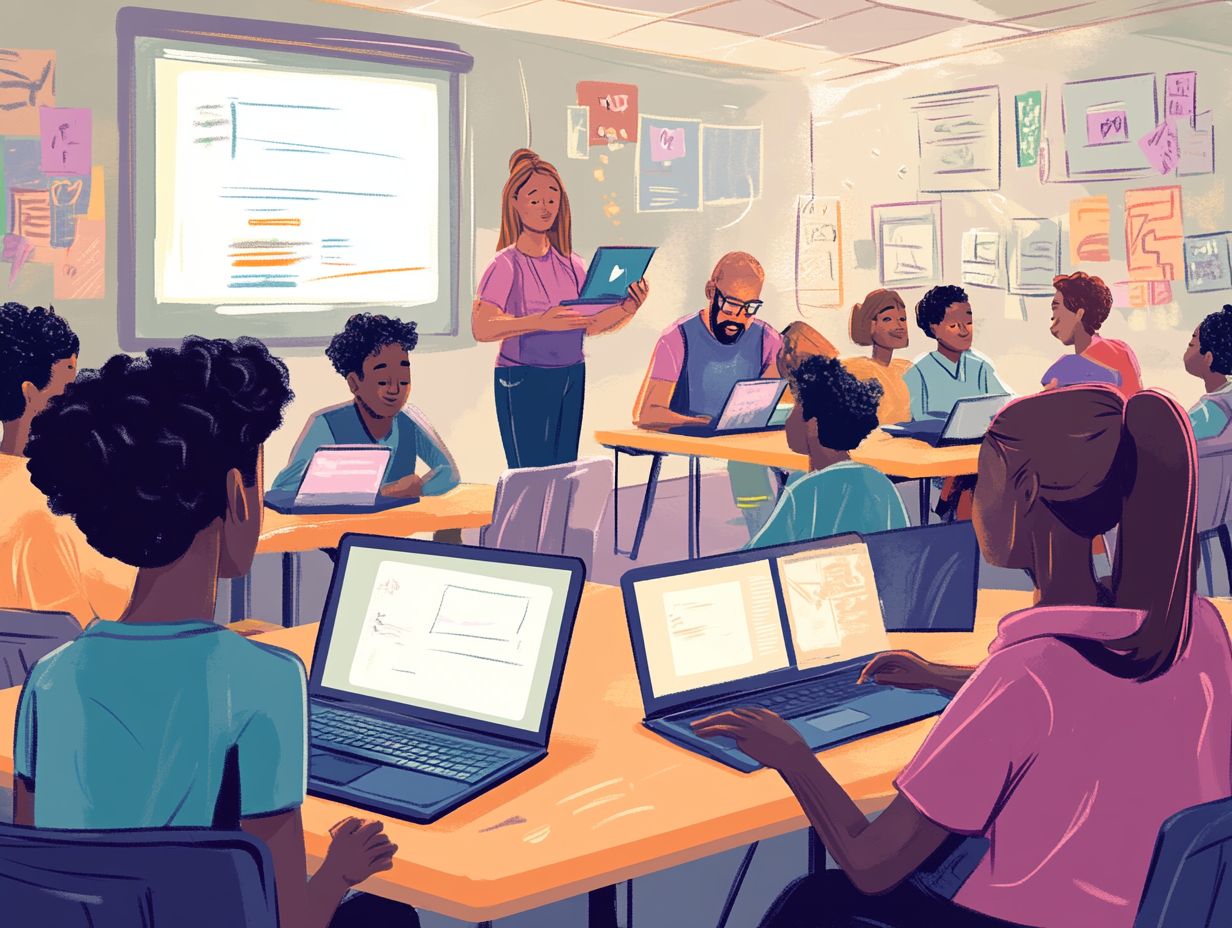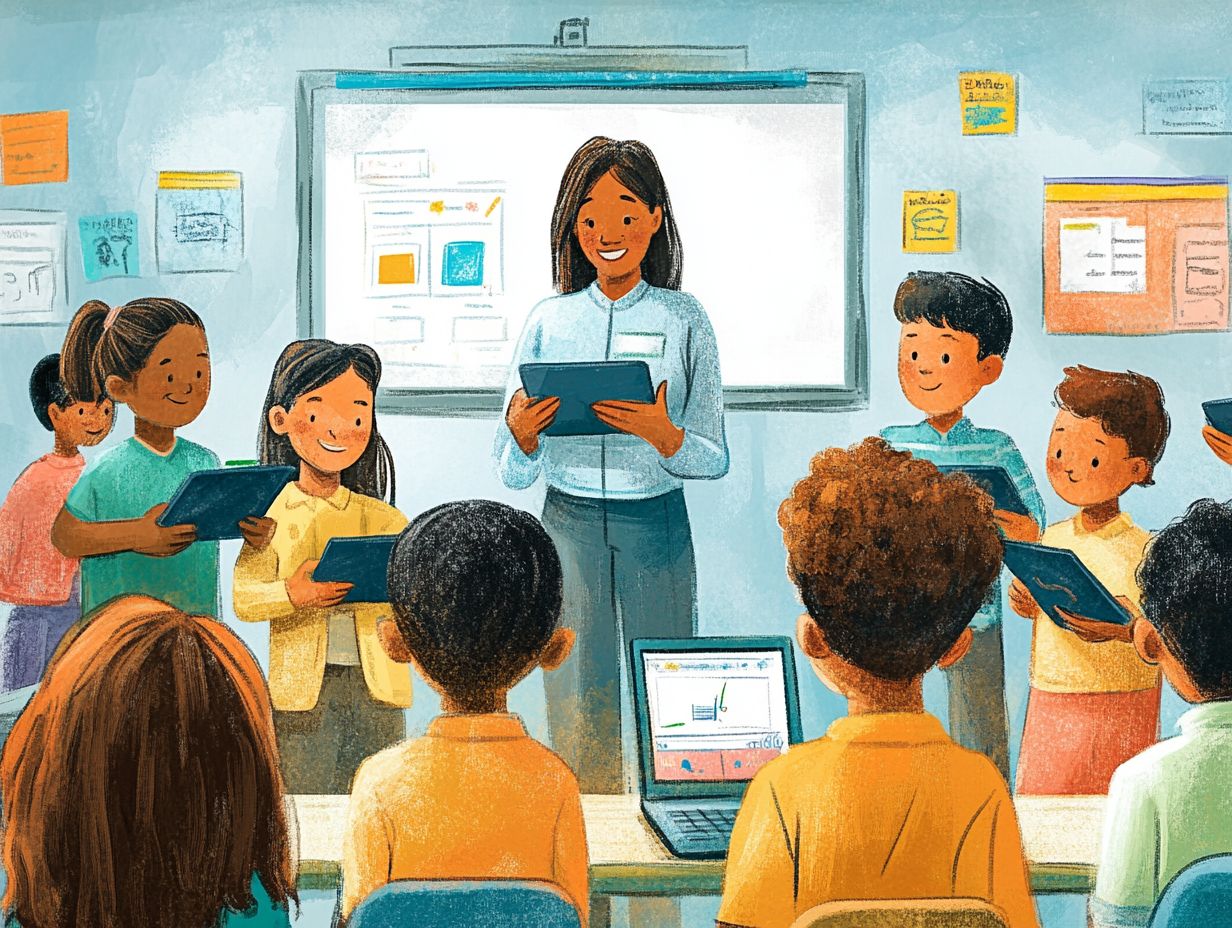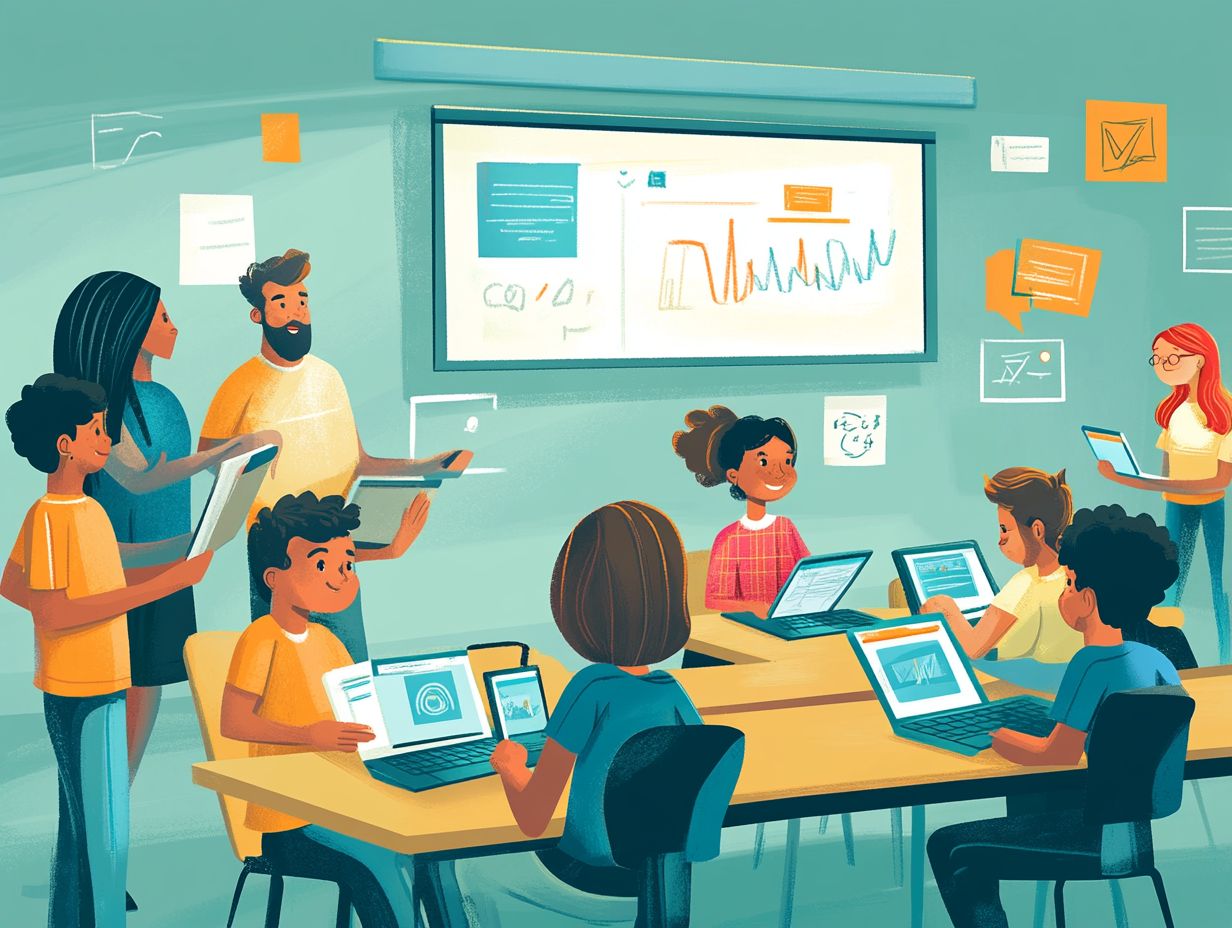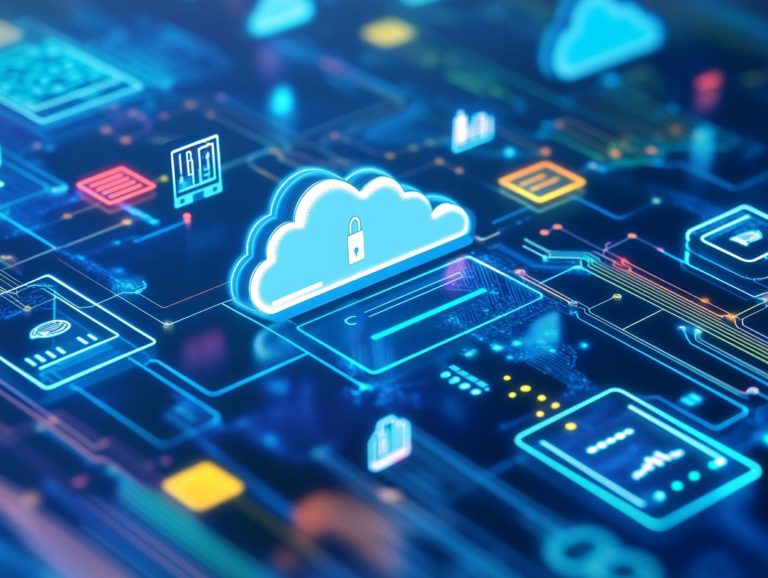SaaS for Education: Transforming Learning Environments
SaaS is reshaping how students and educators engage with learning tools.
This article discusses SaaS’s transformative impact on educational environments, highlighting its benefits for both you and your fellow learners while also acknowledging the challenges that accompany this shift.
You’ll find discussions on best practices for effectively implementing SaaS, inspiring case studies that showcase its potential, and insights into future developments in this dynamic field.
Join us as we discover how SaaS can revolutionize education!
Contents
- Key Takeaways:
- The Impact of SaaS on Learning Environments
- Implementing SaaS in Education
- Examples of SaaS in Education
- Future of SaaS in Education
- Frequently Asked Questions
- What is SaaS for Education and how does it transform learning environments?
- What are the benefits of using SaaS for Education in schools?
- How does SaaS for Education promote collaboration and communication in the classroom?
- Is SaaS for Education suitable for all types of educational institutions?
- How does SaaS for Education ensure data security and privacy?
- Can SaaS for Education be integrated with other educational tools and systems?
Key Takeaways:

SaaS has become a popular solution for transforming traditional learning environments, allowing for flexibility, scalability, and cost-effectiveness.
Benefits of SaaS for education include improved access to resources, collaboration opportunities, and streamlined administrative processes.
Successful implementation of SaaS in education requires careful consideration of factors such as data security, integration, and training for educators and students.
What is SaaS and How Does it Apply to Education?
SaaS, or Software as a Service, signifies a groundbreaking shift in the education sector, particularly with the advent of cloud-based applications that deliver innovative solutions carefully designed to meet the needs of schools and students.
The surge of EdTech has empowered K-12 education systems to harness digital tools that enhance personalized learning and increase student engagement.
By offering secure platforms for accessing educational resources, SaaS solutions enable both educators and students to navigate the complexities of modern learning environments.
This transformation encompasses features like adaptive learning technology, which adjusts lessons based on how each student is doing, ensuring that every learner can advance at their own pace.
For example, platforms such as Edmodo and Google Classroom provide educators with data-driven insights, equipping them to monitor student progress and refine their teaching strategies accordingly.
Real-time collaboration facilitated by SaaS applications allows students and teachers to interact seamlessly, share feedback, and conduct assessments online, making the learning experience more immersive and interactive.
These tools not only streamline administrative tasks but also enrich the educational process, ultimately leading to enhanced learning outcomes.
The Impact of SaaS on Learning Environments
The impact of SaaS on learning environments is nothing short of transformative.
It shifts traditional classrooms into immersive spaces that embrace remote learning and virtual classrooms, effectively catering to the unique needs of each student.
With these advanced technologies, educational institutions can leverage adaptive learning tools that significantly enhance student progress and academic performance, all through personalized instruction and innovative teaching strategies.
Benefits for Students and Educators
The benefits of SaaS for you as a student or educator are truly multifaceted, offering personalized learning experiences tailored to your unique needs through innovative solutions and interactive content.
This technology enhances your engagement and equips you with essential tools for professional development, allowing you to adopt effective teaching strategies and assessment methods.
Take gamification tools like Kahoot! and Quizlet, for instance. They’ve been shown to significantly boost academic performance by transforming traditional learning into dynamic, interactive challenges that really motivate you.
On the educator’s side, platforms like Blackboard and Schoology provide data-driven insights that empower you to refine your teaching craft using real-time learning analytics.
These insights help you pinpoint learning trends, adjust your curriculum, and deliver targeted support to students who may be struggling.
This also leads to a more effective and enriching educational experience for everyone involved.
Dive into the world of SaaS today, and see the difference it can make in your educational journey!
Challenges and Limitations

SaaS offers many advantages. However, it also presents challenges for educational institutions.
Issues may include data privacy and the need for secure platforms. Ongoing technical support is often necessary, creating hurdles for educators and students.
Integration costs can also be a burden for schools facing tight budgets. Training staff and students can complicate transitions if not everyone is familiar with the latest technology.
Fear of the unknown may create resistance to new technologies. This resistance can impact student engagement and learning outcomes.
To overcome these challenges quickly, educational institutions should implement step-by-step introductions of technology. Comprehensive training programs and a culture of feedback can promote adaptability and innovation.
Implementing SaaS in Education
Implementing SaaS in education requires careful planning and consideration. Institutions need to harness the power of adaptive learning technologies and learning management systems effectively.
By prioritizing scalability and user-friendliness, schools can facilitate a smooth transition to digital education that meets the distinct needs of both students and staff.
Factors to Consider
When considering SaaS implementation in educational settings, several critical factors must be taken into account. Strong communication skills among educators, the availability of technical support, and alignment with existing curricula are key elements.
Effective communication is vital. Educators need to clearly articulate the benefits of SaaS tools to students and colleagues. This can create an environment that encourages collaborative learning.
Accessible technical support is equally important. When challenges arise, prompt assistance can prevent frustration and keep the learning process on track.
SaaS applications must align with current curricula. This alignment ensures that technology enhances established educational objectives. Schools that have integrated tools like Google Classroom or Microsoft Teams demonstrate how seamless alignment can lead to improved outcomes.
By effectively utilizing these platforms, educators can enrich lesson delivery and facilitate meaningful student interactions.
Best Practices for Successful Implementation
To successfully implement SaaS in educational institutions, it’s essential to adhere to best practices. Invest in comprehensive training for educators and cultivate a culture of innovation.
Ongoing professional development opportunities can greatly enhance teaching effectiveness. Establishing a continuous feedback loop allows for assessing the impact of these tools and making data-driven adjustments.
It’s vital to align SaaS solutions with specific teaching strategies and curricular goals. This ensures that technology enhances pedagogical methods rather than distracts from them.
This holistic approach maximizes student engagement and significantly boosts academic outcomes, enriching the educational experience for both teachers and learners alike.
Examples of SaaS in Education

Examples of SaaS in education are everywhere. They highlight its remarkable effectiveness and versatility across various educational institutions, especially within K-12 settings.
Consider learning management systems like Canvas and Schoology, along with collaborative platforms such as Zoom. These tools have revolutionized how educators deliver content and assess student progress, enriching the educational experience and making it more interactive.
Case Studies and Success Stories
Case studies and success stories illustrate the transformative potential of SaaS in education through smart learning tools that adapt to students needs and boost engagement.
Many educational institutions have integrated these tools to address diverse learning needs. For example, a university harnessed HolonIQ to analyze real-time data on student performance. This enabled educators to fine-tune their teaching strategies with precision.
Another institution leveraged Arduino Cloud to create interactive projects that captivated students in STEM fields and cultivated essential collaboration and problem-solving skills.
These innovative approaches demonstrate how technology can create distinctive learning experiences, fostering a more adaptive educational environment that addresses individual strengths and weaknesses.
Future of SaaS in Education
The future of SaaS in education holds great promise. Forecasts suggest a sustained increase in adopting emerging technologies that elevate digital education to new heights.
As institutions harness these scalable solutions, anticipate remarkable advancements in personalized learning and real-time collaboration. These changes will transform the learning experience.
Predictions and Potential Developments
Predictions for the future of SaaS in education reveal a compelling shift toward remote learning and adopting sophisticated educational resources tailored to meet diverse student needs.
SaaS technologies will advance, leading to developments in teaching strategies and assessment tools. Enhanced interoperability among educational platforms will facilitate seamless data sharing, creating a cohesive learning environment.
Artificial intelligence tools will personalize the learning experience, allowing educators to customize content based on each student’s unique strengths.
Additionally, immersive learning through virtual reality could revolutionize traditional teaching methods, transforming lessons into engaging and unforgettable experiences.
These innovations promise a more dynamic educational landscape, presenting opportunities for students and educators to collaborate more effectively, cultivating a richer learning atmosphere.
Frequently Asked Questions

What is SaaS for Education and how does it transform learning environments?
SaaS (Software as a Service) for Education is a cloud-based software solution designed specifically for educational institutions. It enhances and streamlines learning environments by transforming traditional classrooms into dynamic, collaborative, and engaging spaces through access to various digital tools and resources.
What are the benefits of using SaaS for Education in schools?
SaaS for Education offers numerous benefits, including cost-effectiveness, scalability, accessibility, and improved student engagement. It also allows for seamless integration with existing systems, enabling educators to create personalized learning experiences.
How does SaaS for Education promote collaboration and communication in the classroom?
SaaS for Education provides a collaborative platform for real-time interaction between students and teachers. It allows for file sharing, virtual discussions, and group projects, breaking down physical barriers and promoting a more interactive and inclusive learning environment.
Discover how SaaS can transform your educational journey today!
Is SaaS for Education suitable for all types of educational institutions?
Yes, SaaS for Education can benefit all educational institutions. It suits K-12 schools, colleges, and universities, adapting to their unique needs.
How does SaaS for Education ensure data security and privacy?
SaaS for Education providers implement strong security measures to protect sensitive data. They follow data protection laws like GDPR and FERPA to keep personal information safe.
Can SaaS for Education be integrated with other educational tools and systems?
Yes, it integrates well with various tools like learning management systems and student information systems. This creates a seamless flow of information and enhances the learning experience.






